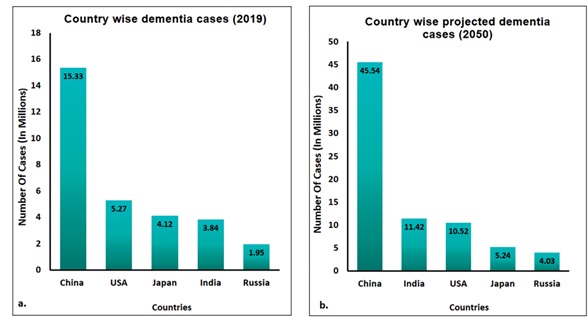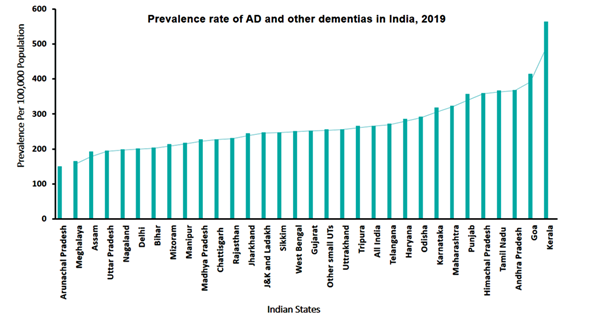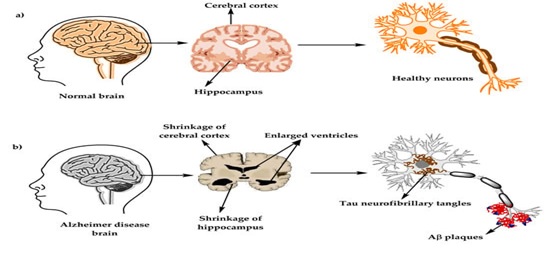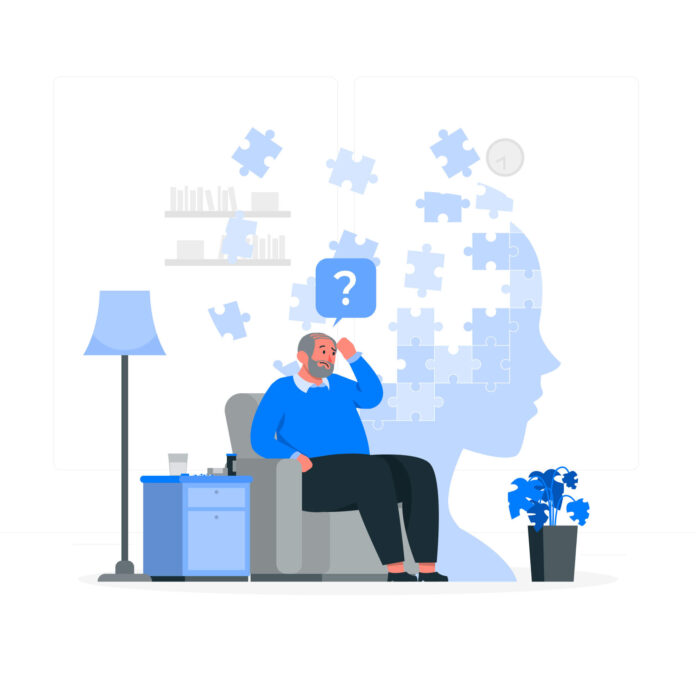Have you ever taken a stroll on a shoreline and looked back to find waves have erased your footsteps? That’s what Alzheimer’s disease does with the memories that are etched on the path of life. A person spends his life hoarding memories like treasures against the twilight of days when eyes get dim and feet falter. It is then Alzheimer’s creeps into the mind like a thief, pilfering the memories of life, one whisper at a time. By the time anyone realizes this, haunting voids replace once vivid memories, leaving a lingering sense of forgetfulness. But it doesn’t just stop there, Alzheimer’s disease is a progressive disease (Alz.org, 2023). The condition of the patient deteriorates with time. Trapped in a cage of deteriorating memory, the mind craves escape, screams for understanding, as the walls of forgetfulness close in.
What is Alzheimer’s?
Alzheimer’s disease was named after a German psychiatrist, Alois Alzheimer (1864-1915). He was the first to discover the pathological features of dementia (Breijyeh & Karaman, 2020). Alzheimer’s disease (AD) is a prevalent form of dementia, characterized by a gradual and progressive neurodegenerative process. AD-associated dementia is one of the primary causes of debilitation among people older than 65 years of age (Ray et al., 2023). However, studies have established the early onset of AD and they comprise around 3% of all AD cases (Qiu et al., 2009).
Globally, an estimated 57.4 million people suffer from AD, and projections indicate this figure will reach 152.8 million by 2050. (Ray et al., 2023). India is 4th largest contributor to the global burden of dementia. Studies have shown that the number of AD cases is higher in countries which are low on the Socio-demographic index (SDI), like India. By 2050, the estimated number of Alzheimer’s cases is poised to surpass those in the US and Japan.(Ray et al., 2023).

In India, the top 5 states with remarkably higher prevalence of AD are; Kerala, Goa, Andhra Pradesh, Tamil Nadu and Himachal Pradesh. These findings also correlate with the proportion of older (>65 years) population in these states (Nichols & Vos, 2022).

What causes the Alzheimer’s Disease?
AD is a multifactorial disease, associated with multiple risk factors. Causes of Alzheimer’s disease include; growing age, genetic factors, head injuries, vascular disease, infections and even environmental factors. There is still some ambiguity in the underlying pathological changes in Alzheimer’s disease (Scutti, 2023). It is characterised by the development of neuritic plaques and neurofibrillary tangles. This results in the accumulation of amyloid-beta peptides (Aβ) in the medial temporal lobe and neocortical structures (Breijyeh & Karaman, 2020). The medial temporal lobe (MLT) has various structures crucial for cognitive and emotional functions. Alzheimer’s disease severely affects the MTL, particularly the hippocampus and entorhinal cortex. This damage results in a decline in memory function observed in patients(Bhushan et al., 2018). Neocortical Structures, are present in the outermost layers and cover the cerebral hemispheres. It is crucial for various cognitive functions like language, perception, movement and reasoning. While MTL is first affected by Alzheimer’s, neocortical structures also eventually succumb to the disease. This results in neurodegeneration and affects different cognitive abilities beyond memory (Breijyeh & Karaman, 2020).

Stages of Alzheimer’s Disease
Clinically, there are four stages of Alzheimer’s disease. These are the pre-clinical or pre-symptomatic stage, the mild or early stage of AD, the moderate AD stage and finally, the severe AD stage or late stage.
Symptoms of the Alzheimer’s Disease
Different stages of Alzheimer’s disease exhibit distinct symptoms. The first stage is marked by mild memory loss and early pathological changes in the cortex and hippocampus. There is no functional impairment (Alz.org, 2023). In the second stage, the symptoms start emerging and the patient starts facing issues in daily life. The third stage exhibits notable memory loss as the disease extends to the cerebral cortex (MacGill, 2023). Challenges include recognizing loved ones, impaired impulse control, and difficulties in reading, writing, or speaking. In the final stage, AD spreads to the entire cortex and the patient is bedridden with high functional and cognitive impairment.
Alzheimer’s Treatments
Despite more than 50 million affected by AD globally, there are only two drugs which are approved for Alzheimer’s treatment. The drugs include; Firstly, inhibitors to cholinesterase enzyme and secondly antagonists to N-methyl d-aspartate (NMDA) (Breijyeh & Karaman, 2020).
Further BPSD (Behavioral and Psychological Symptoms of Dementia) is a common occurrence in Alzheimer’s disease. It is a major cause of concern for the caregivers of AD patients. Antidepressants like: selective serotonin reuptake inhibitors (SSRI: citalopram, fluoxetine, paroxeine, sertraline, trazodone), tricyclic agents and combined serotonergic and noradrenergic can be helpful in such situations (Qiu et al., 2009). Utilize antipsychotics such as olanzapine, quetiapine, and risperidone to address psychosis and agitation in Alzheimer’s disease patients.
There are some promising future treatments of AD such as Disease-modifying treatment or therapy (DMT). Immunotherapies or orally administered small molecules show promise in preventing the onset or slowing the progression of Alzheimer’s disease(Bhushan et al., 2018).
Conclusion
Alzheimer’s disease is now considered a global health concern. Thus, the National Institute on Aging—Alzheimer’s Association updated the criteria (NINCDS-ADRDA) for higher specificity, sensitivity and early detection of AD (Mayoclinic.org, 2023). Living with Alzheimer’s as a caregiver or as a patient is filled with challenges and heartbreak. However, amidst the shadows, the moments of light persist. Early diagnosis, informed support and ongoing research offer a promising roadmap for the treatment of AD. Caring for Alzheimer’s patients requires utmost passion, compassion, and courage.





